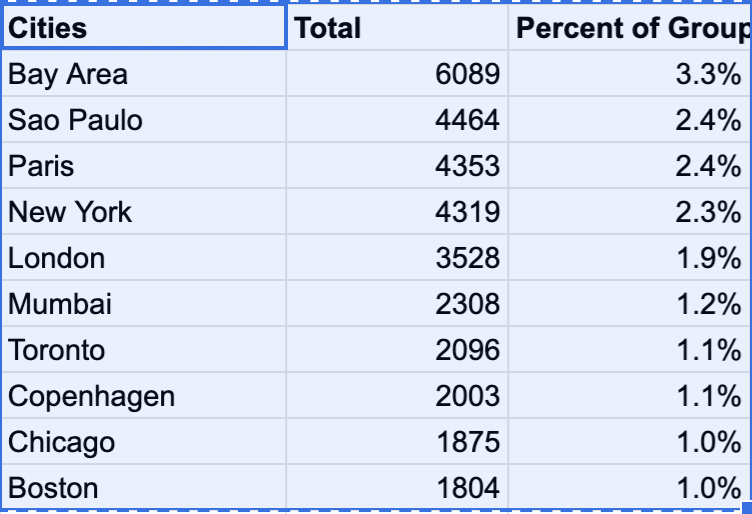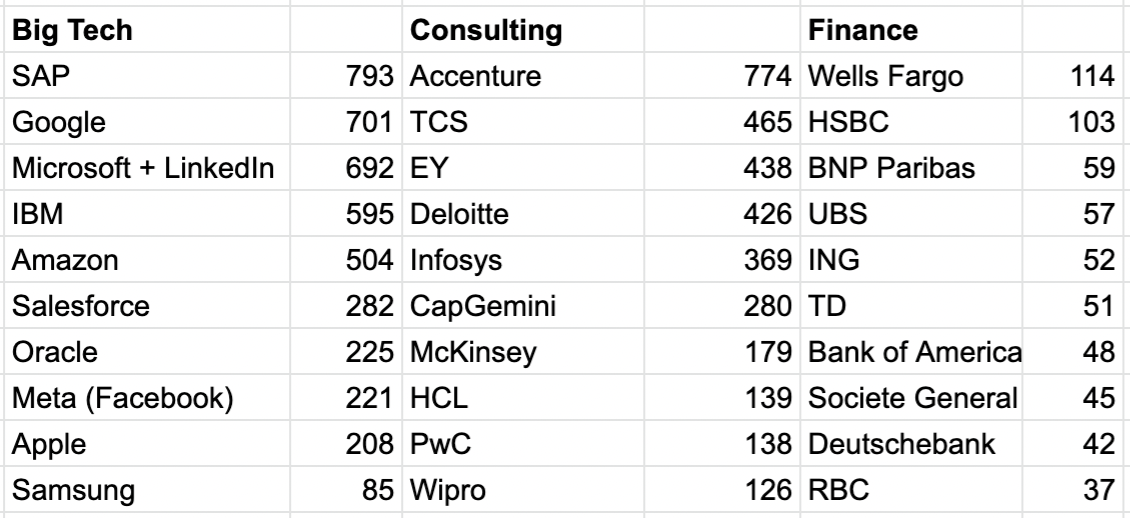Update on The LinkedIn Design Thinking Group
Steven Forth is co-founder and managing partner at Ibbaka. See his skill profile here.
Ibbaka supports the Design Thinking Group on LinkedIn. We take a design thinking approach to our work on skill and competency models and to value-based pricing and customer value management and this is part of our contribution back to the community we are engaged with.
The group has grown steadily through the pandemic and now has more than 185,000 members. Let’s see where these people come from.
Please take our short survey on how organizations are collecting and using skill data
The below data is from Saturday January 29 when there were 185,114 members.
There are no surprises here, the membership tracks participation in the innovation economy, the presence of a design culture, and of course the overall population. It is worth digging a bit deeper on this. The large countries not listed here are China (1638 members) and Japan (467 members). Both these countries are relatively less engaged on LinkedIn for a variety of reasons. Going a bit deeper, there are some smaller countries that are very active on a per capita basis. Denmark stands out, with 3,316 members, the highest number per capita. Sweden also has a lot of members per capita (2200). The innovation powerhouse with relatively few members us Israel (886 members).
Innovation communities are more often built at the city level, so what are the global centers for innovation and design?
That the Bay Area comes first is no surprise. It is the global centre for innovation and the tech industry has been the leading adopter of design thinking. The financial sector is also a big adopter of design thinking, so it is not surprising that financial centers like New York and London are high on the list. It is great to see Sao Paulo and Mumbai on this list. Some other cities that did not quite make the top ten are Amsterdam (1793), New Delhi (1769) and Madrid (1691). My own home city of Vancouver was a bit further down the list at 1057).
Emerging innovation centers like Austin Texas (804) and Mexico City (846) were lower on the list but are growing quickly.
Which companies have the most members in the group?
Big tech and consulting companies top the list. Some finance companies are also adopting design thinking and its twin service design to build differentiation and improve services.
Other major sectors where design thinking is being adopted are automotive and healthcare (pharma and medtech). Automotive is in a historical inflection point with the shift to electric vehicles and the resurgence in new modes of transportation (Mercedes is emerging as a leader in eBikes).
In the healthcare sector the flavor of design thinking most in favor is the Biodesign approach from Stanford. Service design, and especially journey mapping (including patient journey maps) are also seeing a lot of adoption.
Given the big differences between the top few companies and the rest of the companies in these industries it is worth asking whether the number of people engaged in design thinking relates in some ways to differences in strategy.
Design thinking has its origins in leading design companies and is most closely associated with IDEO. These companies are of course much smaller than the giants of big tech, consulting, finance, manufacturing and healthcare, but in the design thinking world they provide the thought leadership and guidance for other organizations.
Fjord 151
Frog 140
Thoughtworks 101
IDEO 64
If you have specific questions about the membership of the LinkedIn design thinking group please reach out to me. The long tail data for this group can deliver some interesting insights.
In the future, I want to dig deeper into the skills, roles and experiences of group members so that we can all build a deeper understanding of design thinking and where it is going.
I am easy to find on LinkedIn and can be reached by email at ‘steven at ibbaka dot com.’
Ibbaka posts on critical skills
Critical Skills for the Future of Work - Managing Trade Offs
Critical Skills for 2022 - First Impressions of Survey Results (this post)






